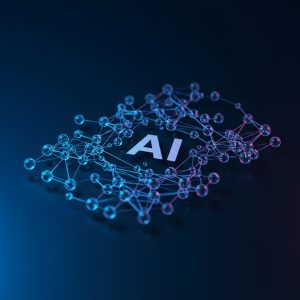How Artificial Intelligence is Transfiguring the Financial Services Industry (in Today’s World)
How Artificial Intelligence is Transfiguring the Financial Services Industry (in Today’s World) is a topic well researched and experimented since the existence of ai (artificial intelligence), to solve the problem of ignorance of non-ai-users making both users and non-users professionals in the industry , making it easy for them to facilitate their work.
How Artificial Intelligence is Transfiguring the Financial Services Industry -The AI Revolution in Finance
Artificial Intelligence (AI) has moved from buzzword status to core driver of innovation in financial services. By harnessing machine learning, natural language processing, and advanced analytics, banks, insurers, asset managers, and fintech firms are reshaping how they fight fraud, engage customers, underwrite credit, ensure compliance, and forecast market trends. This comprehensive exploration examines the key domains where AI is making its mark, highlights emerging use cases on the horizon, and addresses common questions about AI’s impact on finance.
1. AI Adoption – From Pilot Projects to Production
- Early Experimentation: A decade ago, financial institutions treated AI as experimental, running proof‑of‑concepts in isolated pockets–such as chatbots in customer service or anomaly detection in anti‑money laundering (AML).
- Scaling to Enterprise: Today, leading banks have built centralized “AI factories” or data platforms that ingest trillions of events daily, continuously retrain models, and deploy them across multiple business lines.
- Ecosystem Collaboration: Partnerships between incumbent banks, BigTech, and specialized fintechs accelerate AI adoption. Cloud providers now offer turnkey AI services (e.g., model‑training clusters), lowering barriers for smaller players.
2. Fraud Detection and Risk Management – Vigilance in Real Time
- Behavioral Analytics: Machine‑learning models create dynamic risk profiles of customers by analyzing transaction patterns, login behaviors, and device fingerprints. Unusual deviations trigger adaptive authentication or human review.
- Network Analysis: Graph‑based AI uncovers hidden relationships among accounts, IP addresses, and counterparties – spotting fraud rings and money‑laundering networks.
- Continuous Learning: Unlike static rule engines, AI models learn from each new fraud incident. This self‑improving capability keeps defenses one step ahead of evolving schemes.
3. Personalized Customer Experiences – From Mass to Micro‑Targeting
- AI‑Driven Chatbots: Virtual assistants powered by natural language processing (NLP) handle routine inquiries- balance checks, fund transfers, and even basic financial advice- 24/7, freeing human agents for complex cases.
- Predictive Recommendations: By analyzing spending habits, income flows, and stated goals, recommender systems suggest bespoke products: tailored savings plans, investment portfolios, or refinancing options.
- Sentiment Analysis: NLP tools scan social media and customer feedback to gauge brand perception in real time. Financial firms use these insights to refine product design and marketing messaging.
4. Automated Trading and Wealth Management – The Rise of Algorithms
- Algorithmic Trading: High‑frequency trading (HFT) firms employ AI to process vast market data (news feeds, social sentiment, order books) and execute thousands of trades per second- capitalizing on fleeting arbitrage opportunities.
- Robo‑Advisors: Platforms like Betterment and Wealthfront leverage AI for portfolio construction and tax‑loss harvesting. By automating rebalancing and risk management, they democratize wealth management at a fraction of traditional advisory fees.
- Adaptive Strategies: Modern AI models adjust trading algorithms based on regime changes—volatility spikes, central‑bank announcements, or geopolitical events—mitigating losses when markets turn turbulent.
5. Credit Scoring and Loan Approvals – Beyond Traditional Data
- Alternative Data Sources: AI evaluates mobile phone usage, utility payments, social media footprints, and even psychometric tests to assess creditworthiness- broadening access for underbanked populations.
- Real‑Time Underwriting: Automated decision engines process applications in seconds, instantly approving or flagging loans for manual review based on predictive risk scores.
- Bias Mitigation: Ongoing research focuses on explainable AI (XAI) to ensure fairness- identifying biased inputs and providing transparent rationales behind credit decisions.
6. Regulatory Compliance and AML – Smarter RegTech
- Automated Monitoring: Natural language processing scans transaction narratives, KYC documents, and regulatory bulletins to detect compliance gaps or suspicious activities without manual intervention.
- Case Management: AI workflows route alerts to specialized investigators, prioritize cases by severity, and auto‑populate reporting templates–dramatically reducing investigation time.
- Regulatory Reporting: Machine‑readable rules engines translate complex regulatory requirements into executable code, ensuring institutions remain aligned with evolving global standards.
7. Operational Efficiency and Cost Reduction – Doing More With Less
- Process Automation: Robotic Process Automation (RPA) bots, augmented by AI vision and NLP, handle repetitive back‑office tasks–invoice processing, reconciliation, and data entry–slashing operational costs by up to 60%.
- Document Intelligence: AI models extract structured data from unstructured documents (contracts, agreements, emails), enabling faster onboarding, due diligence, and audit preparation.
- Predictive Maintenance: Beyond physical assets, financial firms apply AI to IT infrastructure–predicting system outages or performance bottlenecks before they impact customers.
8. Future Trends and Challenges – Navigating the AI Frontier
- Explainable AI (XAI): Regulators and customers demand transparency. XAI techniques will evolve to demystify “black‑box” models, mapping inputs to outputs and quantifying uncertainty.
- Decentralized Finance (DeFi): AI could monitor on‑chain transactions, assess smart‑contract risks, and automate lending in permissionless protocols–bridging traditional finance with blockchain ecosystems.
- Quantum Computing: While nascent, quantum‑accelerated AI promises to solve optimization problems (e.g., portfolio optimization, risk simulations) orders of magnitude faster than classical algorithms.
- Ethical and Privacy Considerations: Striking the balance between personalization and data privacy will be paramount. Privacy‑enhancing technologies (PETs) like federated learning and differential privacy will gain prominence.
Executive Summary – Key Takeaways
- Real‑Time Protection: AI fortifies fraud detection and AML with continuous learning and network analysis.
- Customer Centricity: Personalized experiences from chatbots to product recommendations- boost engagement and loyalty.
- Automated Investing: Algorithmic trading and robo‑advisors democratize access to sophisticated strategies.
- Inclusive Credit: Alternative data and AI scoring extend credit to underserved segments.
- RegTech Evolution: Automated compliance streamlines monitoring, reporting, and case management.
- Operational Scale: AI‑driven automation optimizes back‑office functions and IT resilience.
- Emerging Frontiers: Explainability, DeFi, and quantum computing represent the next wave of AI innovation.
What is Artificial Intelligence (AI) within the Financial Services Sector?

Artificial Intelligence (AI) refers to computer systems and algorithms designed to perform tasks that normally require human intelligence such as learning from data, recognizing patterns, making decisions, and interpreting natural language. Within the financial services sector, AI encompasses a broad suite of technologies and approaches that empower banks, insurers, asset managers, and fintech firms to automate processes, enhance customer experiences, mitigate risk, and uncover new revenue streams.
Core AI Technologies in Finance
- Machine Learning (ML) – Algorithms that train on historical financial data (transactions, market prices, customer behavior) to predict future outcomes, flag anomalies, or recommend personalized products.
- Natural Language Processing (NLP) – Techniques enabling computers to understand, interpret, and generate human language. In finance, NLP powers chatbots, sentiment analysis of news and social media, and automated document processing.
- Robotic Process Automation (RPA) – Software “robots” programmed to carry out repetitive back‑office tasks—such as data entry, reconciliation, and report generation—freeing human staff to focus on higher‑value work.
- Computer Vision – Image‑analysis models that interpret and classify visual data. Used in insurance claims (e.g., assessing vehicle damage from photos) or document scanning for onboarding.
- Predictive Analytics – Statistical and AI-driven models that forecast market trends, customer churn, loan default probabilities, and operational risks.
Key Applications of AI in Financial Services
- Fraud Detection & Risk Management
AI systems continuously analyze transaction patterns and network relationships to detect suspicious activities and emerging fraud schemes in real time. - Customer Engagement & Personalization
Intelligent virtual assistants and chatbots handle routine inquiries, while recommendation engines suggest tailored credit, savings, or investment products based on individual financial profiles. - Automated Trading & Wealth Management
High‑frequency trading algorithms and robo‑advisors leverage AI to execute trades and manage portfolios with precision, speed, and reduced emotional bias. - Credit Underwriting & Loan Approvals
By incorporating traditional credit data alongside alternative sources (e.g., utility payments, mobile usage), AI-driven credit models deliver faster, more inclusive lending decisions. - Regulatory Compliance & RegTech
AI-powered monitoring tools scan transactions and regulatory updates, automate case management for anti‑money laundering (AML), and generate compliant reports with minimal human intervention. - Operational Efficiency
From intelligent document processing to predictive maintenance of IT infrastructure, AI streamlines workflows, reduces errors, and cuts operational costs.
Why AI Matters in Financial Services
- Enhanced Accuracy – AI’s ability to process vast datasets with sophisticated algorithms reduces manual errors and uncovers insights that humans might miss.
- Scalability – Automated models can handle millions of customer interactions or transactions simultaneously, supporting growth without linear increases in headcount.
- Speed & Agility – Real‑time analytics enable institutions to respond rapidly to market shifts, fraud attempts, or evolving customer needs.
- Competitive Advantage – Early adopters of AI differentiate themselves by offering smarter products, lower costs, and superior risk controls.
In Summary, Artificial Intelligence in financial services is the integration of advanced computational techniques–machine learning, NLP, RPA, and beyond- into core banking, insurance, investment, and compliance processes. By automating routine tasks, personalizing customer experiences, and delivering predictive insights, AI is reshaping the industry’s efficiency, resilience, and innovation trajectory.
Frequently Asked Questions – AI in Financial Services
Q1 – What is Artificial Intelligence in finance?
AI in finance refers to the application of machine learning, NLP, and advanced analytics to automate decision‑making, personalize services, detect fraud, and optimize operations across banking, insurance, asset management, and fintech.
Q2 – How does AI detect fraud faster than traditional methods?
AI models continuously learn from new data, analyze complex patterns across multiple dimensions (transactions, user behavior, network relationships), and flag anomalies in real time—far outpacing static rule‑based systems.
Q3 – Are AI‑based credit scores reliable?
Yes. By incorporating alternative data sources (mobile usage, utility payments, online behavior) and using robust bias‑mitigation techniques, AI credit scores can provide accurate, inclusive assessments- often lowering default rates.
Q4 – Will AI replace human financial advisors?
Unlikely entirely. AI excels at data‑driven tasks- portfolio rebalancing, risk analytics, routine queries—freeing human advisors to focus on complex, relationship‑driven guidance, holistic planning, and nuanced negotiations.
Q5 – How do financial institutions ensure AI compliance?
Through RegTech solutions that automate rule ingestion, transaction monitoring, and reporting; by adopting explainable AI frameworks; and by maintaining audit trails of model decisions and data lineage.
Q6 – What skills do finance professionals need in the AI era?
Proficiency in data analytics, programming (Python/R), understanding of machine‑learning concepts, and the ability to translate business problems into technical requirements. Soft skills- critical thinking, ethical judgment, and cross‑functional collaboration- remain indispensable.
Conclusion – Embracing the Intelligent Future
Artificial Intelligence stands at the epicenter of a seismic shift in financial services. Institutions that invest strategically in AI capabilities- not merely as isolated pilots but as enterprise‑wide engines- will unlock superior risk management, operational efficiency, and customer satisfaction. As the technology matures, the lines between finance, technology, and data science will continue to blur, rewarding organizations that foster interdisciplinary talent and ethical innovation.
By understanding AI’s transformative power today, financial leaders can steer their firms toward sustainable growth, resilience, and competitive advantage in tomorrow’s digital economy, READMORE FROM AI CATEGORY.










![Top 10 Easy Ways A Beginner Can Make Money Online With SEO in 2025 [Proven Strategies] 36 Top 10 Easy Ways A Beginner Can Make Money Online With SEO in 2025 [Proven Strategies]](https://loadcoded.com/wp-content/uploads/2025/07/IMG-20250727-WA0060-768x768.jpg)



